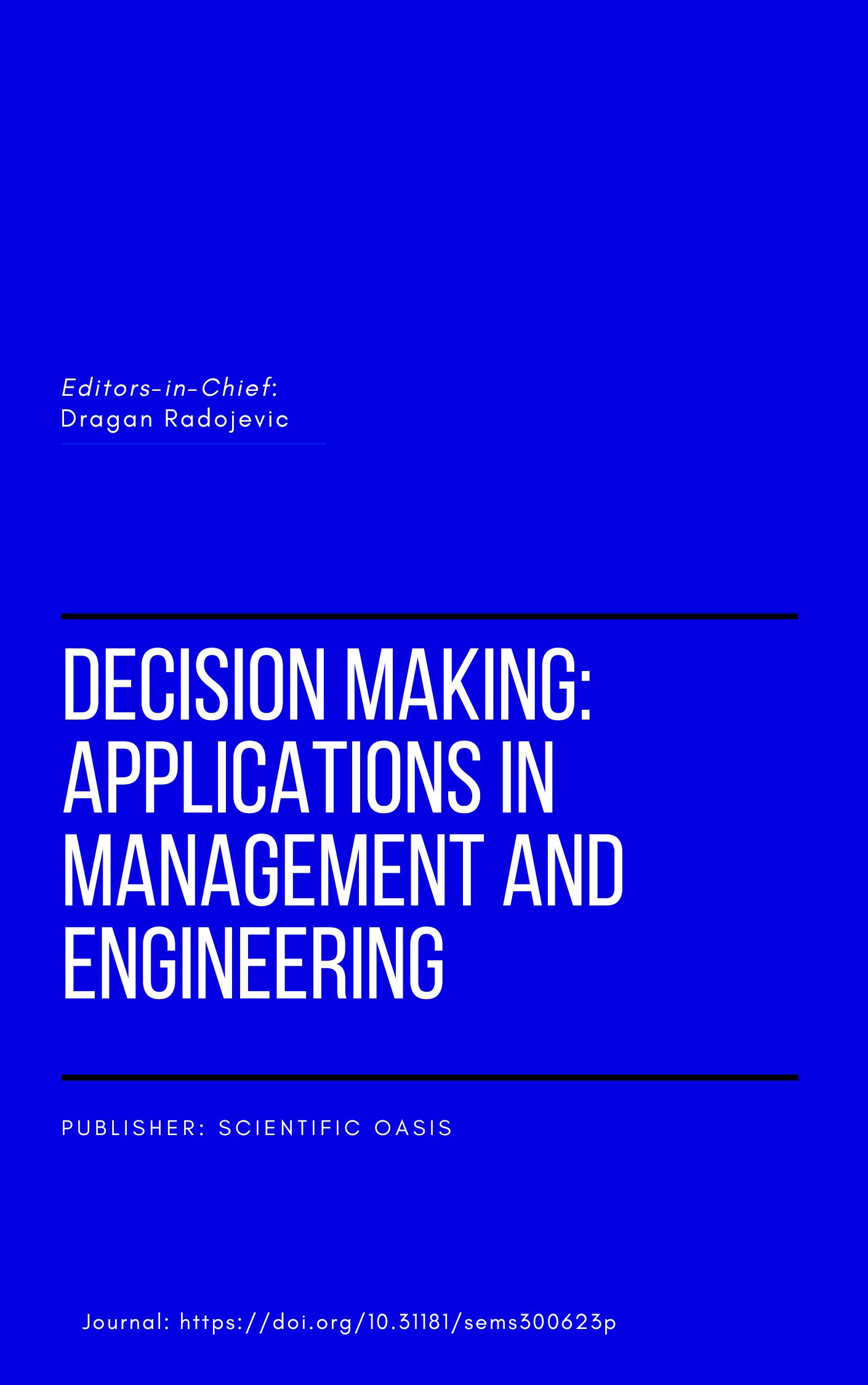Bayesian Restructuring Technology Acceptance Model (TAM) with Moderating Lecture Self-Managing in E-Learning Adoption
DOI:
https://doi.org/10.31181/dmame8120251427Keywords:
Bayesian SEM; E-learning; Innovation; Lecturer Engagement; Lecture Self-Managing (LSM); Moderating Variable; Quality Education; SEM; Technology Acceptance Model (TAM)Abstract
High-quality lecturing is pivotal in advancing the Sustainable Development Goals (SDGs) through both traditional and digital education approaches. In E-learning, lecturers play a fundamental role in influencing adoption and effectiveness. This study introduces a restructured Technology Acceptance Model (TAM) by incorporating Lecture Self-Managing (LSM) as a moderating variable, enhancing its applicability to E-learning contexts. Bayesian Structural Equation Modelling (SEM) was employed to assess the performance of the restructured TAM compared to the original framework. The revised TAM was implemented within an E-learning system, with data collected through structured surveys from lecturers actively engaged in E-learning over one semester. The findings revealed that LSM significantly moderated the relationships between Subjective Norm (SN) and Perceived Ease of Use (PE), as well as SN and Perceived Usefulness (PU), with a BIC of 11,974.18—lower than the BIC of 12,009.42 when LSM was considered an external variable. These results indicate that integrating LSM as a moderating factor within TAM enhances the assessment of E-learning effectiveness. The innovation of lecturer-managed learning content within LSM can enrich and improve the success of E-learning implementation.
Downloads
References
[1] Agustina, M. (2013). Pemanfaatan E-Learning sebagai Media Pembelajaran Seminar Nasional Aplikasi Teknologi Informasi (SNATI), https://journal.uii.ac.id/Snati/article/view/3064
[2] Kaanklao, N., & Suwathanpornkul, I. (2020). Development of the learning management process to enhance the chemistry learning achievement and conceptual comprehension on organic chemistry using the posner’s approach with design-based research. Kasetsart Journal of Social Sciences, 41(2), 282-288. https://doi.org/10.1016/j.kjss.2018.07.016
[3] Mashroofa, M. M., Haleem, A., Nawaz, N., & Saldeen, M. A. (2023). E-learning adoption for sustainable higher education. Heliyon, 9(6), e17505. https://doi.org/10.1016/j.heliyon.2023.e17505
[4] Sota, C., & Peltzer, K. (2017). The Effectiveness of Research Based Learning among Master degree Student for Health Promotion and Preventable Disease, Faculty of Public Health, Khon Kaen University, Thailand. Procedia - Social and Behavioral Sciences, 237(2016), 1359-1365. https://doi.org/10.1016/j.sbspro.2017.02.226
[5] Teo, T., Lee, C. B., & Chai, C. S. (2008). Understanding pre-service teachers' computer attitudes: Applying and extending the technology acceptance model. Journal of Computer Assisted Learning, 24(2), 128-143. https://doi.org/10.1111/j.1365-2729.2007.00247.x
[6] Davis, F. D. (1989). Perceived usefulness, perceived ease of use, and user acceptance of information technology. MIS Quarterly: Management Information Systems, 13(3), 319-339. https://doi.org/10.2307/249008
[7] Candra, S., Nuruttarwiyah, F., & Hapsari, I. H. (2020). Revisited the Technology Acceptance Model with E-Trust for Peer-to-Peer Lending in Indonesia (Perspective from Fintech Users). International Journal of Technology, 11(4), 710-721. https://doi.org/10.14716/ijtech.v11i4.4032
[8] Lee, Y. C., Li, M. L., Yen, T. M., & Huang, T. H. (2010). Analysis of adopting an integrated decision making trial and evaluation laboratory on a technology acceptance model. Expert Systems with Applications, 37(2), 1745-1754. https://doi.org/10.1016/j.eswa.2009.07.034
[9] Legris, P., Ingham, J., & Collerette, P. (2003). Why do people use information technology? A critical review of the technology acceptance model. Information and Management, 40(3), 191-204. https://doi.org/10.1016/S0378-7206(01)00143-4
[10] Szajna, B. (1996). Empirical evaluation of the revised technology acceptance model. Management Science, 42(1), 85-92. https://doi.org/10.1287/mnsc.42.1.85
[11] Hair, J. F., Anderson, R. E., Tatham, R. L., & Black, W. C. (1998). Multivariate Data Analysis (5 ed.). Prentice Hall. https://archive.org/details/multivariatedata0000unse_d9x9
[12] Zhang, Y., & Li, N. (2024). Performance Evaluation of Intelligent Agricultural Supply Chain Based on Structural Equation Model. Decision Making: Applications in Management and Engineering, 7(2), 101-118. https://doi.org/10.31181/dmame722024930
[13] Nugroho, P. S., Latief, Y., & Wibowo, W. (2022). Structural Equation Modelling For Improving Fire Safety Reliability through Enhancing Fire Safety Management on High-Rise Building. International Journal of Technology, 13(4), 740-750. https://doi.org/10.14716/ijtech.v13i4.5517
[14] Lee, S. Y. (2007). Structural Equation Modeling: A Bayesian Approach. John Wiley & Sons. https://doi.org/10.1002/9780470024737
[15] Aggorowati, M. A., Iriawan, N., Suhartono, & Gautama, H. (2012). Restructuring and expanding technology acceptance model structural equation model and bayesian approach. American Journal of Applied Sciences, 9(4), 496-504. https://doi.org/10.3844/ajassp.2012.496.504
[16] Angela, Sylvia, C., Handoko, & Abdurachman, E. (2018). E-learning acceptance analysis using technology acceptance model (Tam) (case study: Stmik mikroskil). Journal of Theoretical and Applied Information Technology, 96(19), 6292-6305. https://doi.org/10.5281/zenodo.3256381
[17] Baber, H. (2021). Modelling the acceptance of e-learning during the pandemic of COVID-19-A study of South Korea. International Journal of Management Education, 19(2), 100503. https://doi.org/10.1016/j.ijme.2021.100503
[18] Humida, T., Al Mamun, M. H., & Keikhosrokiani, P. (2022). Predicting behavioral intention to use e-learning system: A case-study in Begum Rokeya University, Rangpur, Bangladesh. Education and Information Technologies, 27(2), 2241-2265. https://doi.org/10.1007/s10639-021-10707-9
[19] Hussein, Z. (2016). Leading to Intention: The Role of Attitude in Relation to Technology Acceptance Model in E-Learning. Procedia Computer Science, 105(2016), 159-164. https://doi.org/10.1016/j.procs.2017.01.196
[20] Sukendro, S., Habibi, A., Khaeruddin, K., Indrayana, B., Syahruddin, S., Makadada, F. A., & Hakim, H. (2020). Using an extended Technology Acceptance Model to understand students’ use of e-learning during Covid-19: Indonesian sport science education context. Heliyon, 6(11), e05410. https://doi.org/10.1016/j.heliyon.2020.e05410
[21] Ibrahim, N. K., Al Raddadi, R., AlDarmasi, M., Al Ghamdi, A., Gaddoury, M., AlBar, H. M., & Ramadan, I. K. (2021). Medical students’ acceptance and perceptions of e-learning during the Covid-19 closure time in King Abdulaziz University, Jeddah. Journal of Infection and Public Health, 14(1), 17-23. https://doi.org/10.1016/j.jiph.2020.11.007
[22] Ibrahim, R., Leng, N. S., Yusoff, R. C. M., Samy, G. N., Masrom, S., & Rizman, Z. I. (2018). E-learning acceptance based on technology acceptance model (TAM). Journal of Fundamental and Applied Sciences, 9(4S), 871-871. https://doi.org/10.4314/jfas.v9i4s.50
[23] Iqbal, J., & Arisman. (2019). Metode Pembelajaran E-Learning Menggunakan Technology Acceptance Modelling (TAM) Untuk Pembelajaran Akuntansi. InFestasi, 14(2), 116. https://doi.org/10.21107/infestasi.v14i2.4856
[24] Kang, M., & Shin, W. S. (2015). An Empirical Investigation of Student Acceptance of Synchronous E-Learning in an Online University. Journal of Educational Computing Research, 52(4), 475-495. https://doi.org/10.1177/0735633115571921
[25] Natasia, S. R., Wiranti, Y. T., & Parastika, A. (2021). Acceptance analysis of NUADU as e-learning platform using the Technology Acceptance Model (TAM) approach. Procedia Computer Science, 197(2021), 512-520. https://doi.org/10.1016/j.procs.2021.12.168
[26] Ritter, N. L. (2017). Technology Acceptance Model of Online Learning Management Systems in Higher Education: A Meta-Analytic Structural Equation Mode. International Journal of Learning Management Systems, 5(1), 1-15. https://doi.org/10.18576/ijlms/050101
[27] Saputera, S. A., Utami, E., & Arief, M. R. (2017). Analisis Penerimaan Sistem E-Learning Menggunakan Technology Acceptance Model (TAM). Jurnal Informasi Interaktif, 2(2), 100-109. http://e-journal.janabadra.ac.id/index.php/informasiinteraktif/article/view/447
[28] Yodha, S., Abidin, Z., & Adi, E. (2019). Persepsi Mahasiswa Terhadap Pelaksanaan E-Learning Dalam Mata Kuliah Manajemen Sistem Informasi Mahasiswa Jurusan Teknologi Pendidikan Universitas Negeri Malang. Jurnal Kajian Teknologi Pendidikan, 2(3), 181-187. https://doi.org/10.17977/um038v2i32019p181
[29] Zardari, B. A., Hussain, Z., Arain, A. A., Rizvi, W. H., & Vighio, M. S. (2021). Development and validation of user experience-based e-learning acceptance model for sustainable higher education. Sustainability (Switzerland), 13(11), 1-17. https://doi.org/10.3390/su13116201
[30] Park, N., Roman, R., Lee, S., & Chung, J. E. (2009). User acceptance of a digital library system in developing countries: An application of the Technology Acceptance Model. International Journal of Information Management, 29(3), 196-209. https://doi.org/10.1016/j.ijinfomgt.2008.07.001
[31] Rafikasari, E. F., Iriawan, N., & Otok, B. W. (2024). On Identifying Anomaly Factor Scores Distribution in Estimating Structural Equation Model Using Bayesian Approach. 2024 9th International Conference on Information Technology and Digital Applications (ICITDA), https://doi.org/10.1109/ICITDA64560.2024.10809444
[32] Lee, S. M., Kim, I., Rhee, S., & Trimi, S. (2006). The role of exogenous factors in technology acceptance: The case of object-oriented technology. Information and Management, 43(4), 469-480. https://doi.org/10.1016/j.im.2005.11.004
[33] Kim, B. G., Park, S. C., & Lee, K. J. (2007). A structural equation modeling of the Internet acceptance in Korea. Electronic Commerce Research and Applications, 6(4), 425-432. https://doi.org/10.1016/j.elerap.2006.08.005
[34] Venkatesh, V., & Davis, F. D. (2000). Theoretical extension of the Technology Acceptance Model: Four longitudinal field studies. Management Science, 46(2), 186-204. https://doi.org/10.1287/mnsc.46.2.186.11926
[35] Groves, M. M., & Zemel, P. C. (2000). Instructional Technology Adoption in Higher Education: An Action Research Case Study. International Journal of Instructional Media, 27(1), 57-65. https://www.learntechlib.org/p/88231/.
[36] Chau, P. Y. K. (1996). An Empirical Assessment of a Modified Technology Acceptance Model. Journal of Management Information Systems, 13(2), 185-204. https://doi.org/10.1080/07421222.1996.11518128
[37] Dang, T. D., Phan, T. T., Vu, T. N. Q., La, T. D., & Pham, V. K. (2024). Digital competence of lecturers and its impact on student learning value in higher education. Heliyon, 10(17), e37318. https://doi.org/10.1016/j.heliyon.2024.e37318
[38] Means, B., Toyama, Y., Murphy, R., Bakia, M., & Jones, K. (2009). Evaluation of Evidence-Based Practices in Online Learning. Structure, 66-66. www.ed.gov/about/offices/list/opepd/ppss/reports.html
[39] Raykov, T., & Marcoulides, G. A. (2006). A first course in structural equation modeling (2nd ed.). Routledge. https://doi.org/10.4324/9780203930687
[40] Bollen, K. A. (1989). Structural equations with latent variables. John Wiley & Sons. https://doi.org/10.1002/9781118619179
[41] Davis, F. D., & Venkatesh, V. (1996). A critical assessment of potential measurement biases in the technology acceptance model: Three experiments. International Journal of Human Computer Studies, 45(1), 19-45. https://doi.org/10.1006/ijhc.1996.0040
[42] Nagy, S., Molnár, L., & Papp, A. (2024). Customer Adoption of Neobank Services from a Technology Acceptance Perspective – Evidence from Hungary. Decision Making: Applications in Management and Engineering, 7(1), 187-208. https://doi.org/10.31181/dmame712024883
[43] Rafikasari, E. F., & Iriawan, N. (2021). Estimation of Technology Acceptance Model (TAM) on the Adoption of Technology in the Learning Process Using Structural Equation Modeling (SEM) with Bayesian Approach. 2021 1st International Conference on Computer Science and Artificial Intelligence (ICCSAI), https://doi.org/10.1109/ICCSAI53272.2021.9609773
[44] Istiqomah, N. m., Yunikawati, N. A., & Irwansyah, M. R. (2021). Self-managed learning in online learning. 4th International Conference on Innovative Research Across Disciplines (ICIRAD 2021), https://doi.org/10.2991/assehr.k.211222.022
[45] Ranius, A. Y. (2013). Pemanfaatan E-Learning Sebagai Media Pembelajaran. Jurnal Teknologi Informasi Dan Komunikasi, 15(1), 54-63. https://www.neliti.com/publications/224891/pemanfaatan-e-learning-sebagai-media-pembelajaran
[46] Team, E. (2004). Buku panduan webCT 4.1 untuk pengajar [WebCT 4.1 Handbook for Educators]. Universiteit Utrecht dan Universitas Padjadjaran, Bandung. https://adoc.pub/pendahuluan-buku-panduan-webct-41-untuk-pengajar-definisi-e-.html
[47] Lee, S. Y., & Song, X. Y. (2004). Evaluation of the Bayesian and maximum likelihood approaches in analyzing structural equation models with small sample sizes. Multivariate Behavioral Research, 39(4), 653-686. https://doi.org/10.1207/s15327906mbr3904_4
[48] Hoogland, J. J., & Boomsma, A. (1998). Robustness studies in covariance structure modeling an overview and a meta-analysis. Sociological Methods and Research, 26(3), 329-367. https://doi.org/10.1177/0049124198026003003
[49] Boomsma, A., & Hoogland, J. J. (2001). The robustness of LISREL modeling revisited. In R. a. d. T. Cudeck, S. and Sörbom, D. (Ed.), Structural equation models: Present and future. (Vol. 2, pp. 139-168). https://www.researchgate.net/publication/237462497
[50] Bentler, P. M., & Chou, C. P. (1987). Practical Issues in Structural Modeling. Sociological Methods & Research, 16(1), 78-117. https://doi.org/10.1177/0049124187016001004
[51] Tarhini, A., Hone, K., & Liu, X. (2014). Measuring the moderating effect of gender and age on E-learning acceptance in England: A structural equation modeling approach for an extended Technology Acceptance Model. Journal of Educational Computing Research, 51(2), 163-184. https://doi.org/10.2190/EC.51.2.b
[52] Liao, Y. K., Wu, W. Y., Le, T. Q., & Phung, T. T. T. (2022). The Integration of the Technology Acceptance Model and Value-Based Adoption Model to Study the Adoption of E-Learning: The Moderating Role of e-WOM. Sustainability (Switzerland), 14(2). https://doi.org/10.3390/su14020815
Downloads
Published
How to Cite
Issue
Section
License
Copyright (c) 2025 Decision Making: Applications in Management and Engineering

This work is licensed under a Creative Commons Attribution 4.0 International License.












